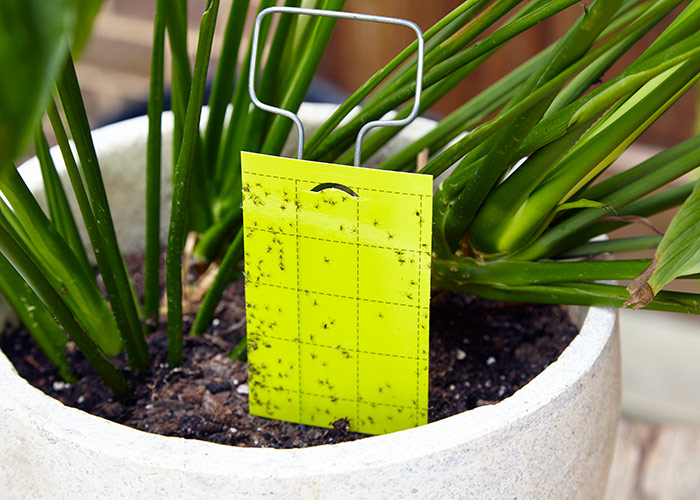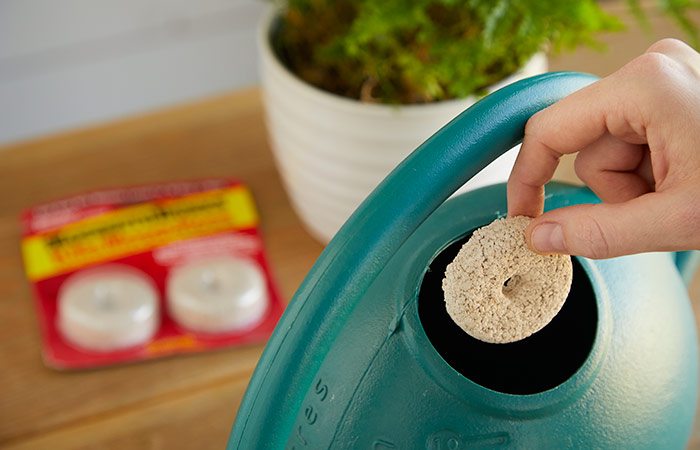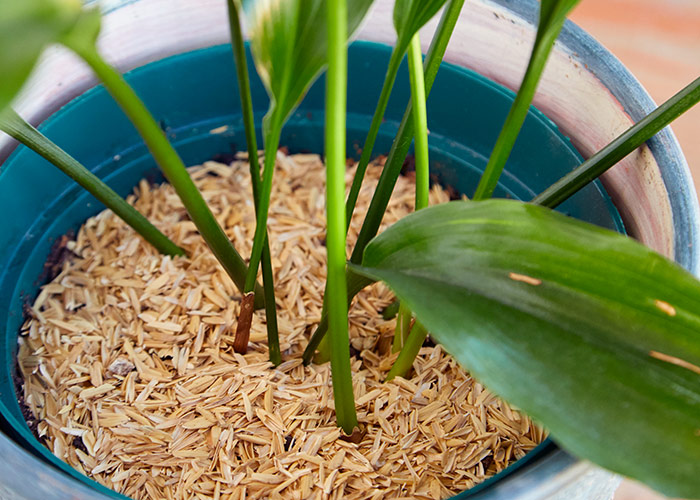Getting rid of fungus gnats
The bane of my existence is the fungus gnat (Bradysia spp.). This insidious little creature’s larva love to inhabit overly wet soils. Their larval feeding habits can damage plant roots, even stunting or killing seedlings or less established plants. Adults leave the soil and fly, often to flutter straight into your mouth or nose. Here are 8 ways to get rid of fungus gnats in your houseplants. For best success I like to combine a few methods. Watch the video above for more details!
1. Dry out the plant
Fungus gnats are attracted to moist soil with fungus and rotting organic materials to feed on. The best way to eliminate them is to water less.

2. Set a sticky trap
The color yellow attracts fungus gnats, so position yellow sticky traps just above the soil surface. Adults fly to the trap, become stuck and die before reproducing.

3. Use a Bt product to control fungus gnats
Attack fungus gnat larvae with Bt (Bacillus thuringiensis subsp. israelensis*), a bacteria available in several forms that is applied to the soil and watered in. Even if the plant is very wet, go ahead and make the application. Just let the plant dry before treating again. Here are a few products that have worked for me:
- Mosquito Bits: Sprinkle granules on the soil
- Mosquito Dunks: Dissolve in water before watering in.
- Gnatrol: This has always been my go-to control. Dilute the liquid in water.

4. Cover the soil
A layer of sand or rice hulls ¼- to 1-inch thick dries out quickly after you water and provides a dry, inhospitable place for adults to lay eggs.
5. Choose potting mix wisely
Fungus gnats invariably arrive in fresh potting mix, having infiltrated wet bags stored outdoors. Peat and coir-based potting mixes dry out better and are less likely to encourage gnats, while mixes with bark and compost are more susceptible.
Potting Mixes to Combat Fungus Gnats
Fungus Gnat Preventing Potting Mix
Coir Potting Mix

6. Set a potato trap for fungus gnat larvae
Slice a potato in half and place the cut side down on the soil. Fungus gnat larvae will be drawn to the potato to feed. Check daily and replace larvae-infested pieces.
7. Use insecticidal soap or neem oil
Though not quite as effective as Bt, these natural insecticides can kill fungus gnat larvae when watered into the soil. Spraying the foliage is not effective for fungus gnats.
You Might Also Like:
6 Organic Garden Products
Tips for Watering Houseplants
7 Common Garden Pests
8. Use natural predators to fight fungus gnats
Nematodes (Steinernema) and predatory mites (Hypoaspis) feed on fungus gnats and their larvae and can be applied to the potting mix as eggs that will hatch and begin to feed. They will gradually attack the problem until there is nothing left for the predators to feed on.
Where to Find Natural Predators
Arbico Organics
Natures Good Guys
Nematodes
Predatory Mites
Pin it for later!
















